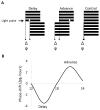Studying circadian rhythms in Drosophila melanogaster
- PMID: 24412370
- PMCID: PMC4049855
- DOI: 10.1016/j.ymeth.2014.01.001
Studying circadian rhythms in Drosophila melanogaster
Abstract
Circadian rhythms have a profound influence on most bodily functions: from metabolism to complex behaviors. They ensure that all these biological processes are optimized with the time-of-day. They are generated by endogenous molecular oscillators that have a period that closely, but not exactly, matches day length. These molecular clocks are synchronized by environmental cycles such as light intensity and temperature. Drosophila melanogaster has been a model organism of choice to understand genetically, molecularly and at the level of neural circuits how circadian rhythms are generated, how they are synchronized by environmental cues, and how they drive behavioral cycles such as locomotor rhythms. This review will cover a wide range of techniques that have been instrumental to our understanding of Drosophila circadian rhythms, and that are essential for current and future research.
Keywords: Behavior; Circadian rhythms; Clock neurons; Drosophila.
Copyright © 2014 Elsevier Inc. All rights reserved.
Figures





References
-
- Weaver DR, Emery P. Circadian Timekeeping. In: Squire LR, editor. Fundamental Neuroscience. Elsevier; 2013. pp. 819–846.
-
- Zhang Y, Emery P. Molecular and Neural Control of Insects Circadian Rhythms. In: Gilbert LI, editor. Insect Molecular Biology and Biochemistry. Academic Press; 2012. pp. 513–551.
-
- Krishnan B, Dryer SE, Hardin PE. Circadian rhythms in olfactory responses of Drosophila melanogaster. Nature. 1999;400:375–378. - PubMed
Publication types
MeSH terms
Grants and funding
LinkOut - more resources
Full Text Sources
Other Literature Sources
Molecular Biology Databases

